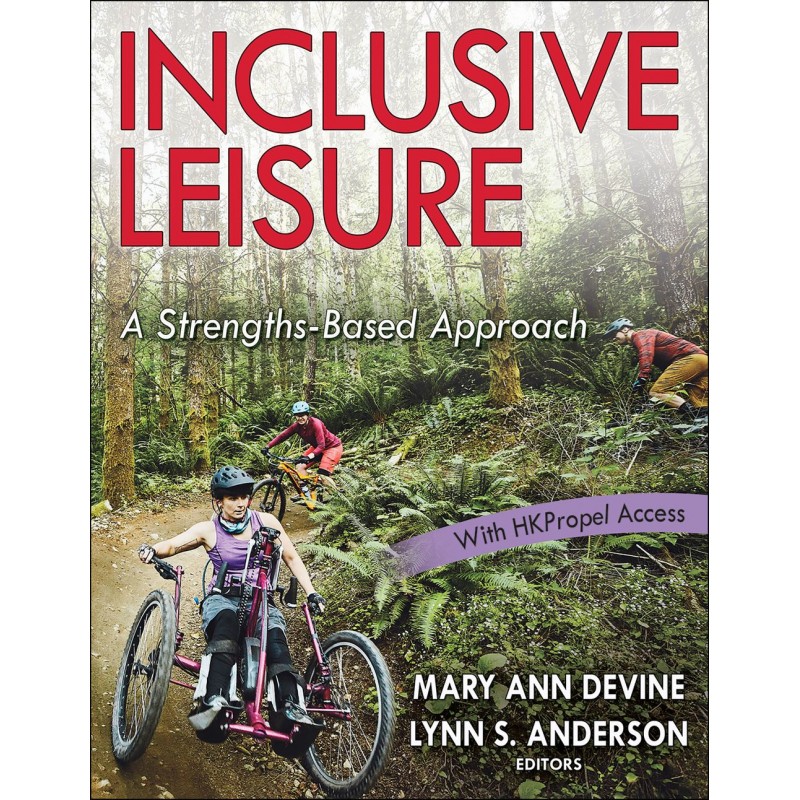Inclusive Leisure:: A Strengths-Based Approach With HKPropel Access blends theoretical and practical information to prepare students to apply the concept of inclusivity to all aspects of the leisure and recreation field.
Inclusive Leisure delivers foundational content to help readers understand inclusion and applies this knowledge to practical and applied scenarios. Grounded in a strengths-based approach, which focuses on a persons abilities rather than their limitations, the comprehensive text moves beyond programming and service delivery by exploring how inclusivity can be applied to administrative practices, organizational philosophy, personnel practices, infrastructure design, community relations, marketing, and more.
Throughout the text, pedagogical aids such as learning outcomes, chapter summaries, and reflection questions help students retain and apply knowledge.
Inclusive Leisure also includes the following features to enhance student engagement::
- Professionals in Action sidebars offer a real-world look at the common issues and inclusive solutions that have been employed by professionals in the field.
- Spotlight on Inclusion sidebars highlight leisure programs that are successfully practicing inclusion in a variety of settings.
- Global View on Inclusion sidebars illustrate the work of international organizations that are committed to spreading inclusive practices around the globe.
- Online learning tools delivered through HKPropel include learning objectives, summaries, and website links for each chapter.
Part I of
Inclusive Leisure outlines fundamental concepts needed to ground professional practice in inclusion. It defines the strengths-based approach and examines foundational and theoretical concepts as well as the legislation that mandates inclusive leisure services. Part II provides in-depth information on inclusive practices that can be used by leisure service professionals to ensure a positive experience for all individuals with disabilities. It challenges readers to go beyond inclusive programs and to apply inclusion in all organizational aspects. Part III offers applied information and examples of inclusion across the breadth of leisure services, including programming in sports, fitness, aquatics, art, outdoor adventure, travel and tourism, special events, and more.
Inclusive Leisure asserts that disability is simply part of the human condition, that the strengths and abilities of people with disabilities must be at the forefront of inclusion, and that access to inclusive leisure is a matter of social justice and a critical professional practice. By learning theoretical and legal foundations, building on that knowledge with a multitude of applied elements, and establishing their practice in a strengths-based approach, students will be well prepared to create inclusive leisure environments and programming.
Note:: A code for accessing HK
Propel is included with all print books.




 Delivery policy
Delivery policy
 Security policy
Security policy
 Return policy
Return policy
